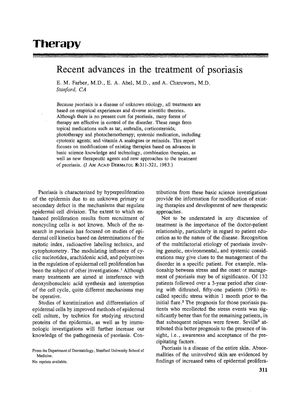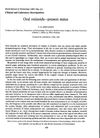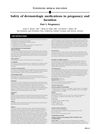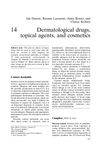Recent Advances in the Treatment of Psoriasis
March 1983
in “
Journal of The American Academy of Dermatology
”
psoriasis topical medications phototherapy photochemotherapy systemic medications retinoids Koebner phenomenon anthralin Ingram approach combination therapies dithranol PUVA coal tar UV radiation systemic chemotherapy cutaneous carcinogenesis etretinate immunomodulating effects antiarthritic effects aromatic retinoids PUVA therapy UV therapy coal tar treatment

TLDR New treatments for psoriasis have improved effectiveness and may reduce long-term side effects when combined with standard therapies.
In 1983, the treatment of psoriasis included topical medications, phototherapy, photochemotherapy, systemic medications, and retinoids, with no cure available but effective control of the disorder. The document discussed the concept of "latent" psoriasis and factors that can exacerbate the condition, such as the Koebner phenomenon, infections, drugs, and stress. It detailed the use of anthralin and its modifications, the Ingram approach, and the effectiveness of combination therapies. A study showed that 82% of 111 patients treated with dithranol and 91% of 113 patients treated with PUVA cleared satisfactorily. Coal tar with UV radiation was also effective, and systemic chemotherapy was used for severe cases but had concerns about long-term toxicity. UV radiation therapy and PUVA were effective, but PUVA had an increased risk of cutaneous carcinogenesis. Etretinate, a new oral retinoid, showed promise, with different dosage schedules for various types of psoriasis, but had side effects and was contraindicated for pregnant subjects. It also had potential immunomodulating and antiarthritic effects, with combination therapies reducing toxicity and potentially achieving faster clearing and longer remissions. The document concluded that aromatic retinoids have enhanced the efficacy of standard antipsoriatic therapies and may play a role in future combination therapy to minimize long-term side effects.




